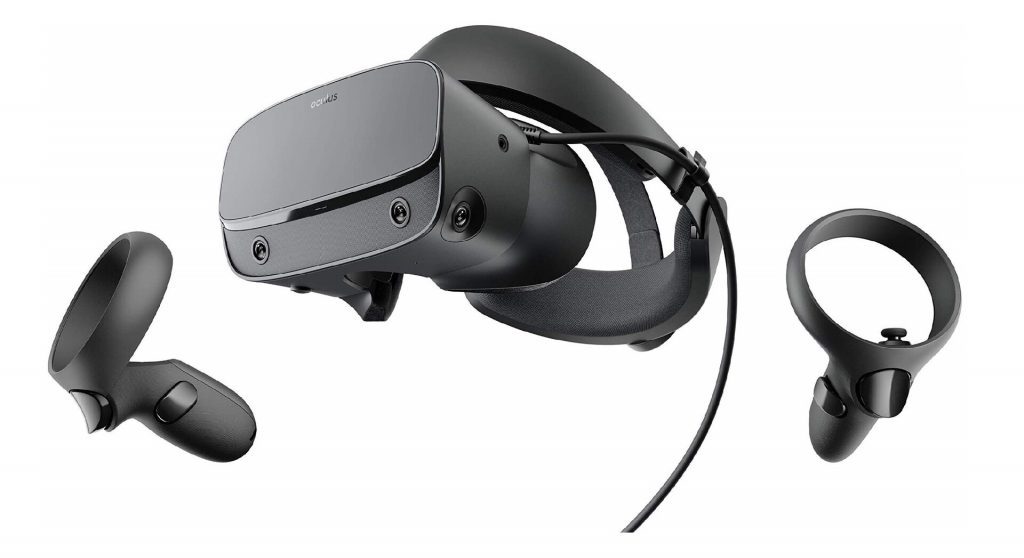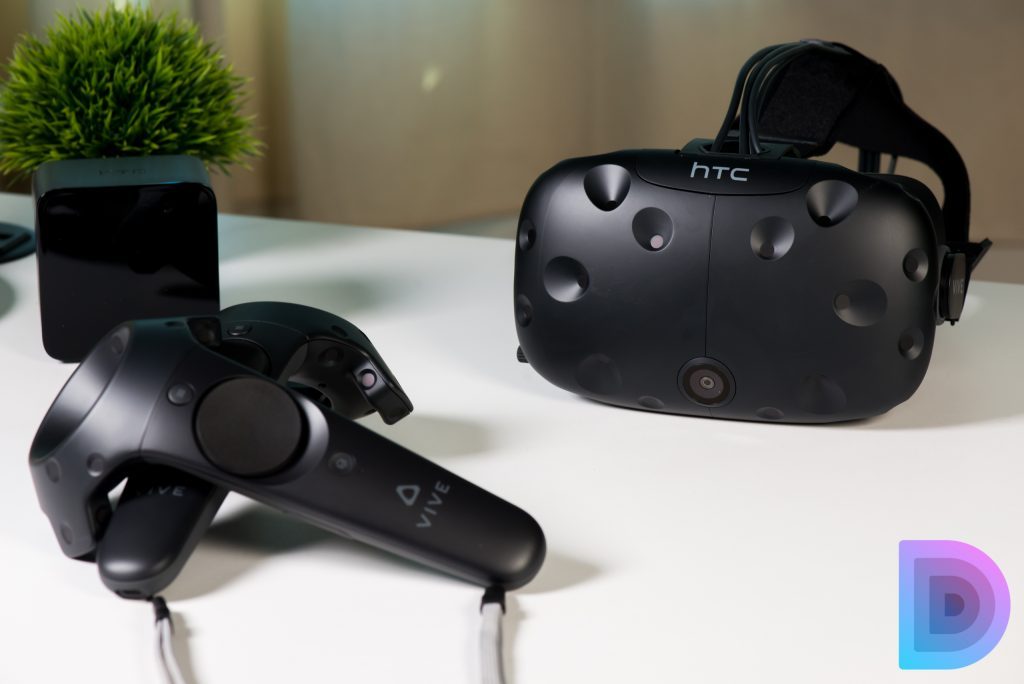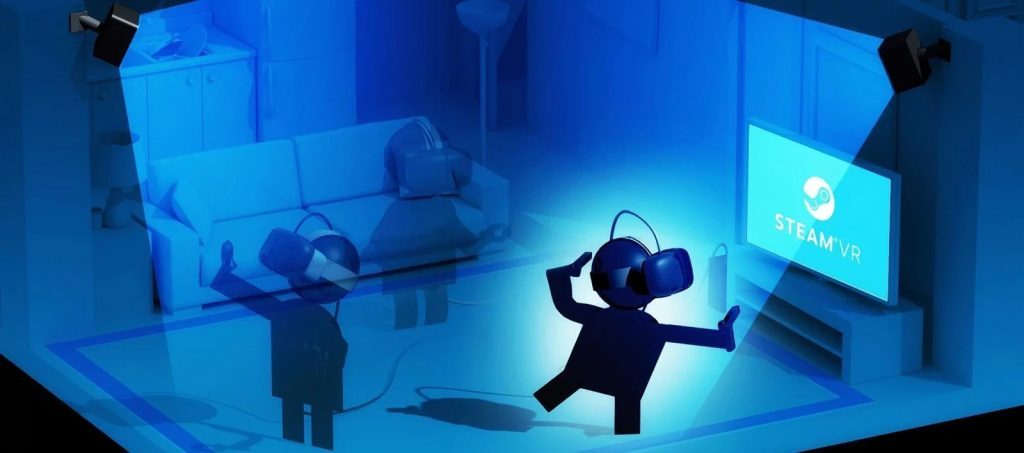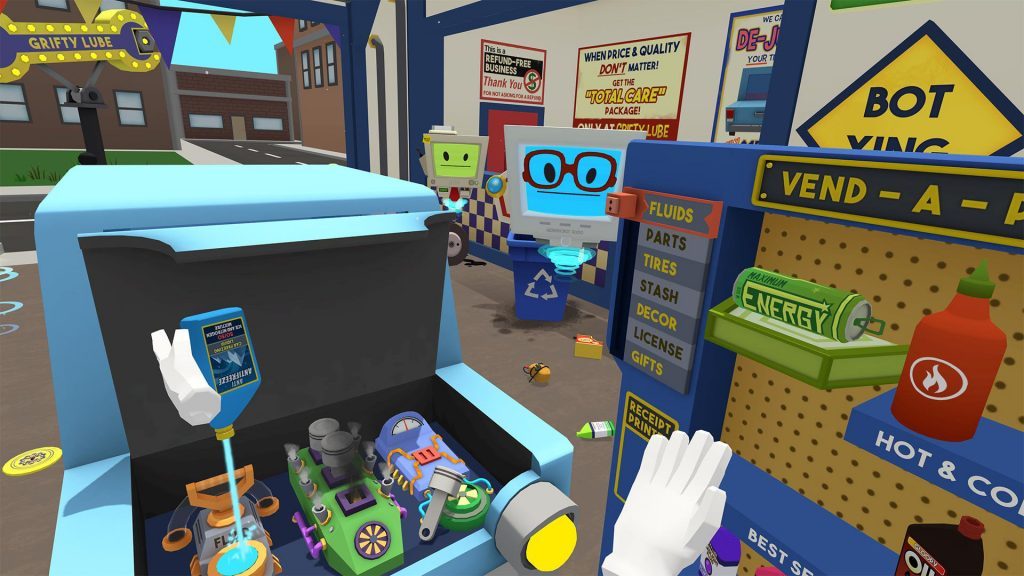
Links on VR Source may earn us a commission, Learn more.
One of the hardest decisions to make when jumping on the virtual reality bandwagon is what headset you should buy. The Oculus Rift S vs Vive Cosmos Elite debate is even worse now than it was when they hit the market in 2016 given the prices have dropped dramatically, the libraries are bigger, and the Rift now includes motion controllers and room-scale support.
The big problem with VR is that it’s a budding market: VR is still a niche industry that’s striving to become the new entertainment delivery platform. We’ve seen virtual reality in science-fiction for decades, and it’s finally here, but not in the mind-blowing form we all envisioned. High-end VR demands lots of cash, it demands a beefy PC, and right now, it’s not meant for the everyday Joe. That said, the tech has already come a long way. While high-end VR has its needs, you can get away with lower spec gear and really enjoy your time.
And if you have the cash and an inching for the virtual realm, the Oculus Rift vs HTC Vive argument can get overwhelming. We dive in to explain how we got here, what’s under their respective hoods, and discover the positives and negatives of each platform, sticking with the Oculus Rift S and HTC Vive Cosmos for a direct comparison, but there are other models, too.
Not wanting to spend a fortune on VR? Mobile VR is probably a better solution for you. In fact, you can even get a VR headset that works with the iPhone.
Table of Contents
The Story
This is actually quite interesting, especially for PC gamers who thrived on Quake and Half-Life in the 1990s. Now under the ZeniMax umbrella, id Software co-founder and lead programmer John Carmack was working on his own VR headset when he started chatting with another collector and tinkerer of VR headsets, Palmer Luckey.
During their first face-to-face meeting, Carmack appeared highly impressed by Luckey’s original prototype and volunteered to tighten the computer vision algorithms that made the VR headset work. Carmack eventually introduced a Rift prototype to the world during E3 2012 running a VR version of Doom 3.
Thanks to the sudden widespread exposure, Luckey decided to drop out of college shortly thereafter to form OculusVR and launch a Kickstarter project to fund further development. Carmack resigned from id Software to serve as Chief Technology Officer for OculusVR by the end of 2013. Facebook bought company in 2014 for $2 billion.
At first, Half-Life and Counter-Strike developer Valve Software backed the Oculus Rift. Both games are based on the GoldSrc engine (aka Gold Source), which is a heavily modified version of John Carmack’s id Tech 2 engine created for the original Quake game. Valve was already working on VR but decided in 2014 that it would share its new tracking technology with OculusVR for the Rift project.
Yet once Facebook acquired OculusVR, Valve Software began communicating with smartphone manufacturer HTC who was already working on a headset of its own. Years later, the HTC Vive hit the market backed by Valve Software‘s SteamVR platform and its Lighthouse technology, following the Oculus Rift’s debut by mere weeks.

The Hardware
Despite the underlying history that connects these two headsets together, what exactly makes them different in 2020, with the latest HTC Vive Cosmos, and the Oculus Rift S? For that answer, let’s start with the hardware for each.
In short, the Vive is a step-up but doesn’t win all the battles. The Rift S is more mid-level, but a step up from entry-level. What makes a difference is that the Rift S doesn’t need external sensors, while the Cosmos has some better specs and less limitations, but is bigger and heavier. Comfort is a concern here. The Rift S is just easier to wear for longer, while the Vive Cosmos isn’t quite as comfortable. The difference is mostly in the cushions. The Rift S is more padded and lighter too.
Here are the hardware specifications:
| HTC Vive Cosmos | Oculus Rift S | |
| Display type: | PenTile LCD | FastSwitch LCD |
| Display size: | 3.4 inches (447 ppi) | 3.54 inches (456 ppi) |
| Resolution per eye: | 1440 x 1700 | 1280 x 1440 |
| Total resolution: | 2880 x 1700 | 2560 × 1440 |
| Refresh rate: | 90Hz | 80Hz |
| Field of view: | 110 degrees | 110 |
| Weight: | 1.5 pounds | 1.2 pounds |
| Motion controllers: | 2x Motion Controllers | 2x Touch Controllers |
| Standard controller support: | Any PC-based | Xbox One |
| External sensors: | 2x Lighthouse tracking. | 2x Constellation sensors |
| Tracking area: | 11’5’’ x 11’5’’ | – |
| Inputs: | DisplayPort 1.2, USB 3.0 | DisplayPort 1.2, USB 3.0 |
| Required link box: | Yes | Yes |
| Audio: | 1x Microphone 1x Headphone jack | 1x Microphone 1x Headphone jack plus speaker integrated in the headset |
| Distribution: | Steam Viveport | Oculus Store Steam Viveport |
| Launch date: | January 3, 2019 | March 20, 2019 |
| Price: | $549 (starting) | $400 |
Of the pair, Only the Vive Cosmos has external lighthouses track you. The Oculus Rift S uses cameras in the headset to do away with those requirements which is a big benefit. Both require a high-end PC to drive the devices properly.
Here are the minimum system requirements as of September 2020:
| HTC Vive | Oculus Rift | |
| Processor: | Intel Core i5-4590 AMD FX 8350 | Intel Core i3-6100 AMD FX 4350 AMD Ryzen 3 1200 |
| Graphics: | GeForce GTX 1060 Radeon RX 480 | GeForce GTX 1050Ti GeForce GTX 960 Radeon RX 470 Radeon R9 290 |
| Memory: | 4GB | 8GB |
| Output: | HDMI 1.4 DisplayPort 1.2 | HDMI 1.3 |
| Input: | 1x USB-A 2.0 | 1x USB-A 3.1 2x USB-A 2.0 |
| Operating system: | Windows 7 SP1 Windows 8.1 Windows 10 | Windows 10 |
The Play Area
The big drawback to VR is that you can’t see the real world. Blind as a bat, you could easily knock a hole in your HDTV, smack someone in the face, trip over furniture or walk directly into a wall. Both the Oculus Rift S and HTC Vive Cosmos have a system in place that prevents this type of self-inflicted damage.
On the Oculus Rift, this system is called Guardian. It’s established during the setup process, requiring you to grab a Touch controller, press the Trigger Button, and draw a line along the outer edges of your play space. With internal sensors, not external, you do get much more room. But the idea is the system throws up a blue-green grid when you get too close to a boundary, protecting yourself and your stuff from being whacked.

The HTC Vive’s version is called Chaperone. The setup process is essentially the same although your play area is a larger 11’5’’ x 11’5’’. Chaperone also throws up a blue grid when you get too close to a boundary. The difference here is that the HTC Vive Cosmos includes a camera mounted on the front, allowing you to briefly see the real world in a light-blue tint before crashing into the HDTV or couch.
What’s important to note here is that, by default, both VR headsets are tethered to your PC. Both include a single “combo” cord that’s long enough for you to enjoy room-scale motion tracking, but can get tied up around your legs like a tree-hugging snake. This can get annoying during highly-active sessions.
HTC has your back. The company just introduced the Vive Wireless Adapter for $300, a device that mounts on the headset’s top head strap. Looking like an angry Pikachu with slumped “ears,” you can jump around in real-world space without any wires. But the catch is that your playtime will only last around 2.5 hours due to the wireless adapter’s built-in battery. You’ll also need an empty PCI Express slot inside your PC to mount the adapter’s WiGig-based receiver. It’s a whole thing.
Ultimately when it comes to the Oculus Rift vs HTC Vive, the Rift S has better play area support given you don’t need sensors. Though for those with limited space, it’s an argument that probably won’t matter much.
The Controllers
When it comes to the Oculus Rift S vs HTC Vive Cosmos, the controllers function similarly but look quite different.
The controllers for the HTC Vive have a single giant ring on the end. They’re balanced and anchored to your wrists via the included straps, and there are buttons on the inner face, including thumbstick.
You’ll also find a “grip” button resting under your left or right thumb on each side of the wand, a trigger button for your pointing finger, and a Menu button below the thumbstick
Each glow during active use and HTC pioneered plenty of features with controllers over the years, but one downside is the controllers are pretty big. They may not be super ergonomic if you have smaller hands.
Meanwhile, the Touch controllers for the Oculus Rift have a different ergonomic design. They sport more misshapen rings packing sensors as well, but the sculpted grip isn’t quite as long, providing enough handle space to fit nice and snug within your enclosed hand. They’re much lighter and a bit more comfortable, but the grip might be a little too short.
Of the two controllers, the Oculus Touch is the better design. These controllers aren’t bulky extensions of your hand as seen with the Vive controllers, fitting perfectly into your grip like a pair of not-quite-so-steel knuckles. The buttons aren’t spaced far apart like those on the Vive Wands either, and the Touch controllers even provide the A/B buttons typically found on gamepads.
That said, there’s no clear winner in this VR controller race. Both are second-generation models with good and bad points that could continue to be refined.

The Software
While there are several differences between the HTC Vive and Oculus Rift hardware platforms, the big division originally resided within their respective software platforms. Catering the PC gamers – who were the target audience anyway – the HTC Vive supported Valve software’s Steam platform at launch. Vive owners could also purchase software through HTC’s stand-alone Viveport platform, both of which are currently accessible from within the Vive headset.
But unlike the HTC Vive, the Oculus Rift launched with a “closed” marketplace called the Oculus Home Store. Owners could also unofficially “side-load” VR-based Steam games by removing the headset and launching them on the Windows desktop. Oculus added native support for off-platform games in 2017, meaning owners could see and launch their Steam games from within the Rift headset.
In an interesting move, HTC brought its Viveport VR Store to the Oculus Rift, giving Rift owners access to everything through HTC’s platform. Rift owners also now have access to the Viveport Subscription, which serves up 500 VR titles for a monthly fee. This subscription service includes Seeking Dawn, Fruit Ninja, Knockout League, Pixel Ripped 1989 and more.
One wedge HTC will never use to sell Vive headsets is exclusive content. Joel Breton, VP of global VR content for Vive, said in 2018 that the company doesn’t want to “use content as a weapon” and “punish” customers who purchased a competing VR headset. Facebook’s OculusVR, however, is somewhat of a different story.

From the start, Facebook and OculusVR have had no problem serving up Rift-based exclusives, although that did change later down the track. And Facebook has made moves, buying the studio that makes Beat Saber, Beat Games.
But whether you choose the Oculus Rift or HTC Vive, you’re not going to see high-resolution, crystal-clear experiences. In both cases, you’ll experience the “screen-door effect” due to their wide field of view. This essentially means the lenses magnify the two screens to the point where you’ll see the hardware lines that separate each pixel. As the technology improves, the screen-door effect will subside in future models.
You’ll also discover that many games rely on a point-and-click form of movement. For example, you’ll choose a spot within the virtual realm, press a button, and then instantly transport to that spot. Game controllers may be supported as well in some cases, including Microsoft’s Xbox One controller, but you’ll mostly see the point-and-click method. Why? To reduce motion sickness, especially for when you’re standing.
Oculus Rift vs HTC Vive – so which is the better headset?
That’s a good question. Ultimately, you’ll see a lot of declarations saying one is better than the other. Both have their weaknesses and strengths. What you need to decide is how much are you willing to pay in the long run, if you’ll need the added expense of upgrading your PC, and whether you’re happy simply buying from Steam and Viveport Infinity’s bundles of games like a Netflix for VR. Or, you may want access to the exclusive content served up on the Oculus Home Store.
Both work well and you’ll have loads of games to choose from.
The main factor here is that we’re talking about a $399 headset in the Oculus Rift S, while the HTC Vive Cosmos is much more expensive. And that’s leaving out the HTC Vive Cosmos Elite, which is much more expensive again.
One useful thing about a Cosmos is HTC letting you upgrade and get wireless adapters and so on. But HTC isn’t exactly the healthiest company in the world right now. And adding more accessories adds more costs. Ultimately, it’s a good headset but it’s in a challenging market. The Rift S is by no means perfect and has overall slightly less capable hardware, but at least throwing down the $400 won’t lead to loads more costs outside of games. But, you’ll need a PC.
